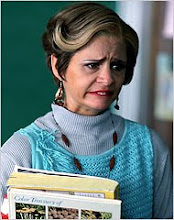
The theory of gendered organization is that men and women hold different jobs, and the jobs women hold pay less than those that men occupy. Also, even when men and women are in the same occupation, women still make les (Britton p. 5). Britton uses this theory to frame her research by interviewing various women prison guards and why these gendered organizations exist, specifically within the prison system. By “doing gender”, men and women obtain different jobs or handle situations in the same job differently. For instance, one woman in “At Work in the Iron Cage” discusses how she uses her femininity to get the inmates to cooperate with her. By being sensitive and “fragile” as a woman, she knows that she can work these “female traits” to her advantage.
Structure, agency, and culture are interlinked in the process of organization gendering. Structure is the division between the public and private life of individuals. “Most modern work organizations presume that the labor involved in day-to-day reproduction of their workers may be relegated to the private realm, thus enacting a rigid separation between the work lives of their employees and such activities as childbirth, child care, sexuality, eating and sleeping (Acker 1992). While some employees provide benefits for these private needs they are often viewed as extra and women are frequently left with the responsibility of balancing both private and public spheres. The private and public spheres idea is a gendered one because of this. Women are often having to figure out ways to provide child care while they work, as we have learned in the previous unit. Many women work in clerical positions as a result since they rely on having a more flexible career. The woman’s nearly sole responsibility of family management prevents her from accepting promotions, working overtime, location transfers, and other opportunities that allow the employee to move up the hierarchical ladder at work. Labor laws and practices have had to be modified in order to accommodate these private life needs. Gendering through culture occurs through our social standard and the media. Films, TV shows, books, and various other sources of entertainment and media show men and women performing different roles. “The military, for example, has traditionally been viewed as a place where boys are turned into men, and this image has been reinforced ad nauseam in literally hundreds of war movies (Britton p. 12). Men are often viewed as solving issues through violence while “women police officers emphasize the benefits of defusing conflict” (Britton p. 14). Agency reinforces gendered organizations because they allow people to see themselves as appropriately gendered through their work. For instance, unions that are created to protect a gender right perpetuates gender inequality, even if that is not the intention.

No comments:
Post a Comment